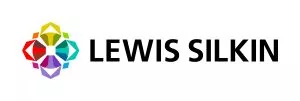The British Council for Offices ("BCO") is the UK's leading membership organisation for the office sector, representing owners, occupiers, developers and professionals. On 30 January 2025 it released the third edition of its Guide to Fit-Out, which reflects recent technological innovations and the increasing prevalence of hybrid working compared with the previous 2011 edition.
With growing demand for offices that support employee wellbeing, the guide empowers occupiers to foster a happy and productive workforce and informs built environment professionals of the expectations of today's occupiers. Read on to learn of the 6 key themes from the new Guide to Fit Out:
1. The Growing Importance of ESG
Environmental, social and governance ("ESG")
principles are placed at the heart of the new guide's
recommendations, recognising that modern office environments must
do more than simply provide a place to work. Acknowledging that
responsible business is now a core value for many organisations,
ESG considerations are woven throughout the guide. Practical advice
is provided on integrating ESG into areas ranging from material
selection and responsible sourcing to energy efficiency and waste
reduction. This will help occupiers ensure that their offices
support broader organisational commitments to sustainability and
responsible business.
Therefore, ESG is now treated, not as an afterthought, but as a
foundational element that influences every stage of the office
lifecycle, from design to construction to operation.
2. Responding to a Changing World of Work
The guide emphasises that whilst the nature of work in 2025 has fundamentally shifted, the office remains a vital space for collaboration, innovation and building connections. The guide encourages occupiers to view the office as more than just a place to work; instead, as a hub for organisational culture and group activity. At the same time, highlighting research showing that inflexible work policies have led to significant employee turnover, the guide advises occupiers to develop workplace strategies that accommodate diverse workstyles, enabling employees to choose where and how they work best. It introduces the concept of activity-based working ("ABW"), which recognises that employees engage in a range of activities requiring different settings and technologies. By empowering individuals and teams to select the most suitable environment for their tasks, ABW promotes productivity and well-being, as well as helping occupiers attract a broad talent pool across generations.
3. Designing Offices as Destinations
To entice employees back to the office, the guide encourages creating workplaces that attract, rather than compel, attendance. The modern office should offer amenities and environments that surpass what employees can access at home. This includes a variety of work settings and collaboration zones that foster human connection, creativity and a sense of belonging. The question for employees should shift from "Why must I go to the office?" to "Why wouldn't I go?".
4. Human-Centric Design
The importance of designing workplaces that are inclusive and human-centric is emphasised. The guide calls for spaces that offer a range of environments for different work modes, support neurodiversity and reflect an organisation's brand and values. Case studies provide illustrations of how leading organisations have used office design to express their culture, support well-being and create distinctive, engaging environments valued by both employees and visitors. For the first time, entire chapters are dedicated to health and well-being and to acoustics, demonstrating the importance of human-centric design in the modern workplace.
5. Quality Project Governance Breeds Success
Occupiers are advised to support their project team briefs with
thorough data collection, employee engagement and benchmarking. A
well-designed brief ensures alignment amongst stakeholders,
providing a clear framework for decision-making and setting
measurable objectives for the fit-out project. Ultimately, this
supports a successful outcome.
Additionally, effective project management is highlighted as
essential for successful fit-outs. The guide recommends appointing
a project sponsor and a cross-functional steering group to provide
leadership, resolve competing requirements and ensure timely
decision-making. Change management is also addressed, with
strategies for engaging employees and supporting the transition to
new ways of working.
6. Practical Guidance for Occupiers
Finally, the guide offers practical advice on the provision of amenities, integration of technology and compliance with statutory regulations. Topics include selecting and installing furniture, ensuring accessibility and meeting health and safety standards. The importance of post-occupancy evaluation and continuous improvement is highlighted, ensuring that office environments remain responsive to evolving organisational and employee needs.
Conclusion
The BCO's new Guide to Fit-Out is an essential resource for corporate occupiers seeking to create future-ready workplaces. By combining strategic vision with practical guidance, the guide empowers organisations to design offices that are flexible, inclusive, sustainable, cost-effective and aligned with their business objectives and culture. Knowing that the key ingredient to most businesses' success is their people and their workforce, it is refreshing to see the latest updates focus on how the industry can create the best places for the best people, to facilitate them doing their best.
The content of this article is intended to provide a general guide to the subject matter. Specialist advice should be sought about your specific circumstances.


